From the given circuit,
Find
(i) Equivalent emf of the combination
(ii) Equivalent internal resistance
(iii) Total current
(iv) Potential difference across external resistance
(v) Potential difference across each cell
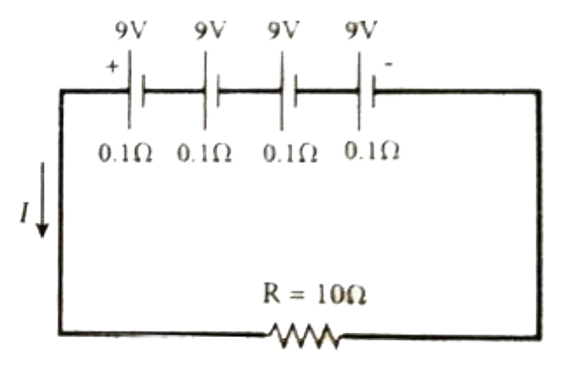 Solution in Tamil
Solution in Tamil
(i) Equivalent emf of the combination
ξeq=nξ=4×9=36V
(ii) Equivalent internal resistance req=nr
=4×.01=0.4Ω
(iii) Total current I=nξR+nr=4×910+(4×0.1)=4×910+0.4=3610.4
I=3.46A
(iv) Potential difference across external resistance V=IR=3.46×10=34.6V. The remaining 1.4V is dropped across the internal resistance of cells.
(v) Potential difference across each cell
Vn=34.64=8.65V
Topper's Solved these Questions
- BOOK - FULL MARKSCHAPTER - CURRENT ELECTRICITYEXERCISE - TEXTBOOK EVALUATION (Choose the correct answer)15videos
CURRENT ELECTRICITY
- BOOK - FULL MARKSCHAPTER - CURRENT ELECTRICITYEXERCISE - TEXTBOOK EVALUATION (Short Answer Questions)21videos
CURRENT ELECTRICITY
- BOOK - FULL MARKSCHAPTER - COMMUNICATION SYSTEMSEXERCISE - ADDITIONAL QUESTIONS (Additional problems)3videos
COMMUNICATION SYSTEMS
- BOOK - FULL MARKSCHAPTER - DUAL NATURE OF RADIATION AND MATTEREXERCISE - ADDITIONAL QUESTIONS -( ADDITIONAL NUMERICAL PROBLEMS : )10videos
DUAL NATURE OF RADIATION AND MATTER
Similar Questions
The following graph shows current versus voltage values of some unknown conductor. What is the resistance of this conductor?
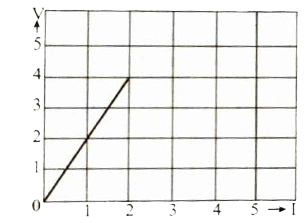 06:08View Solution
06:08View SolutionWhy current is a scalar?
View SolutionA radio can tune into any station in the 7.5 MHz to 12 MHz band. What is the corresponding wavelength band ?
View SolutionIf a light of wavelength 4950 Å is viewed as a continuous flow of photons, what is the energy of each photon in eV ? (Given h=6.6×10−34Js, c =3×108ms−1)
04:22View SolutionIn the circuit the potential difference across the capacitor is 10 V . Each resistance is of 3Omega The cell is ideal. The emf of the cell is
04:27View SolutionIn the given circuit , the potential difference across the capacitor is 12 V. Each resistance is of 3Ω. The cell is ideal. The emf of the cell is
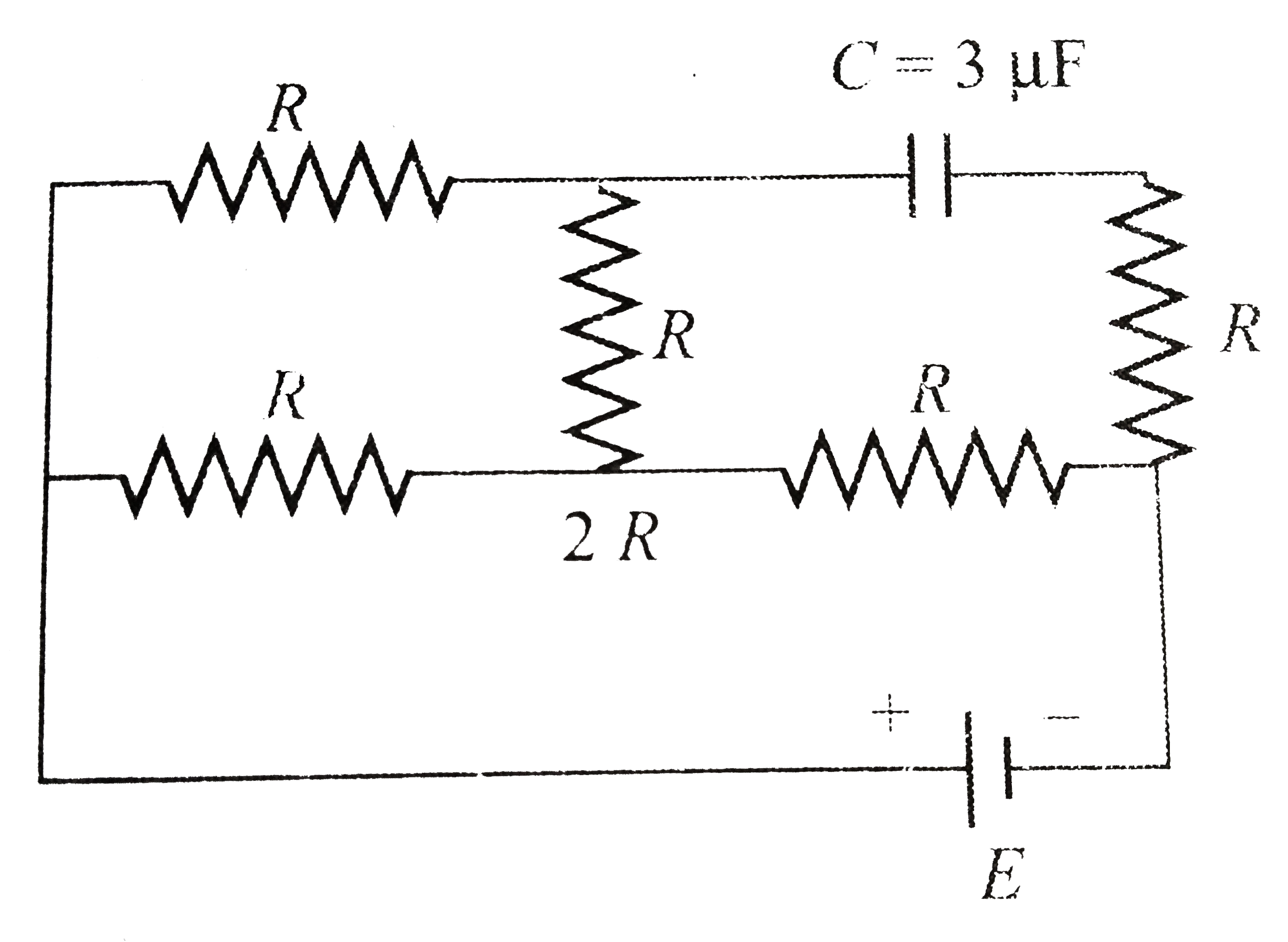 03:32View Solution
03:32View Solution(a) Find the potential difference between A and B
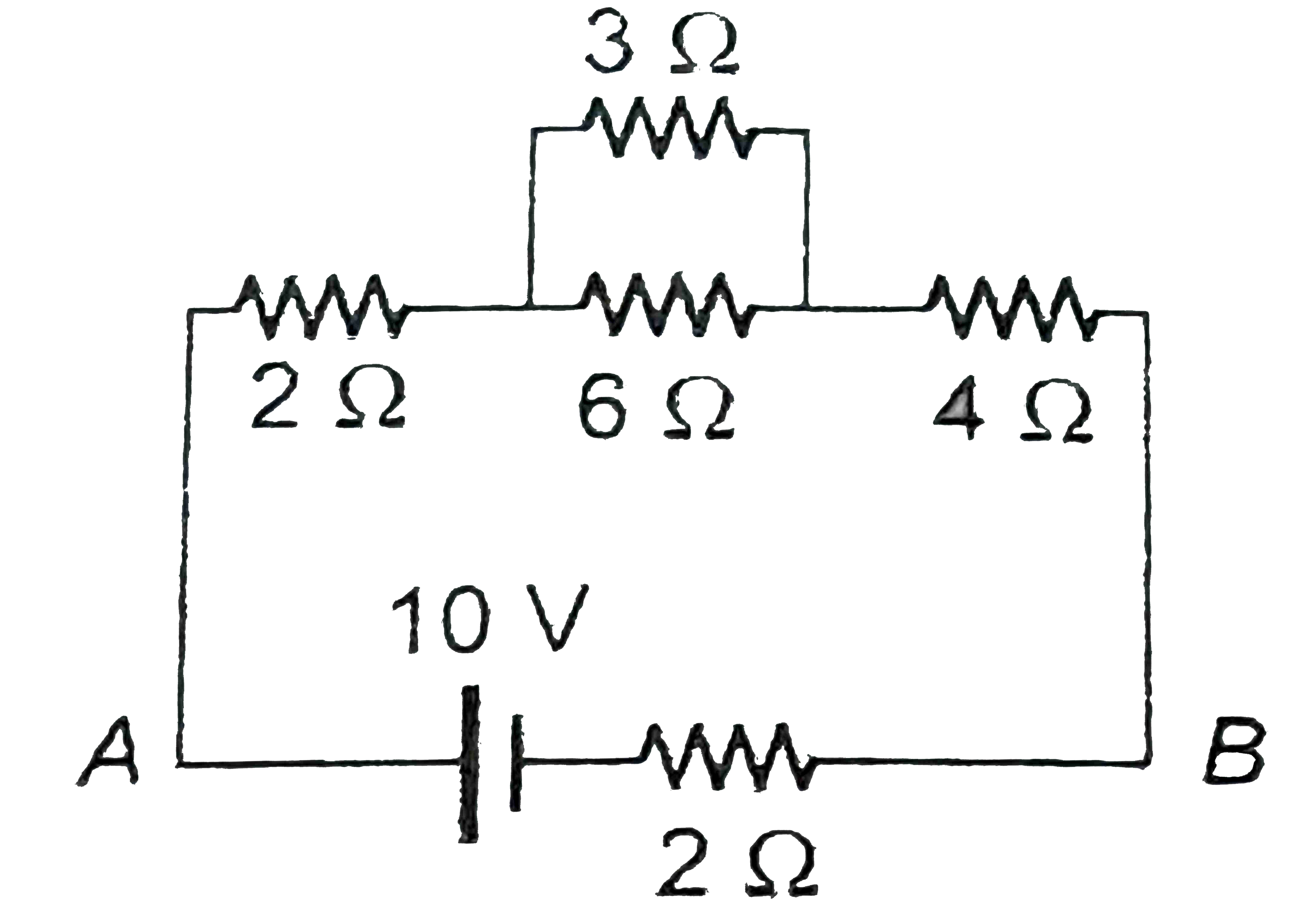
(b) Calculate the current flowing in the circuit and the potential difference across terminals of each cell.
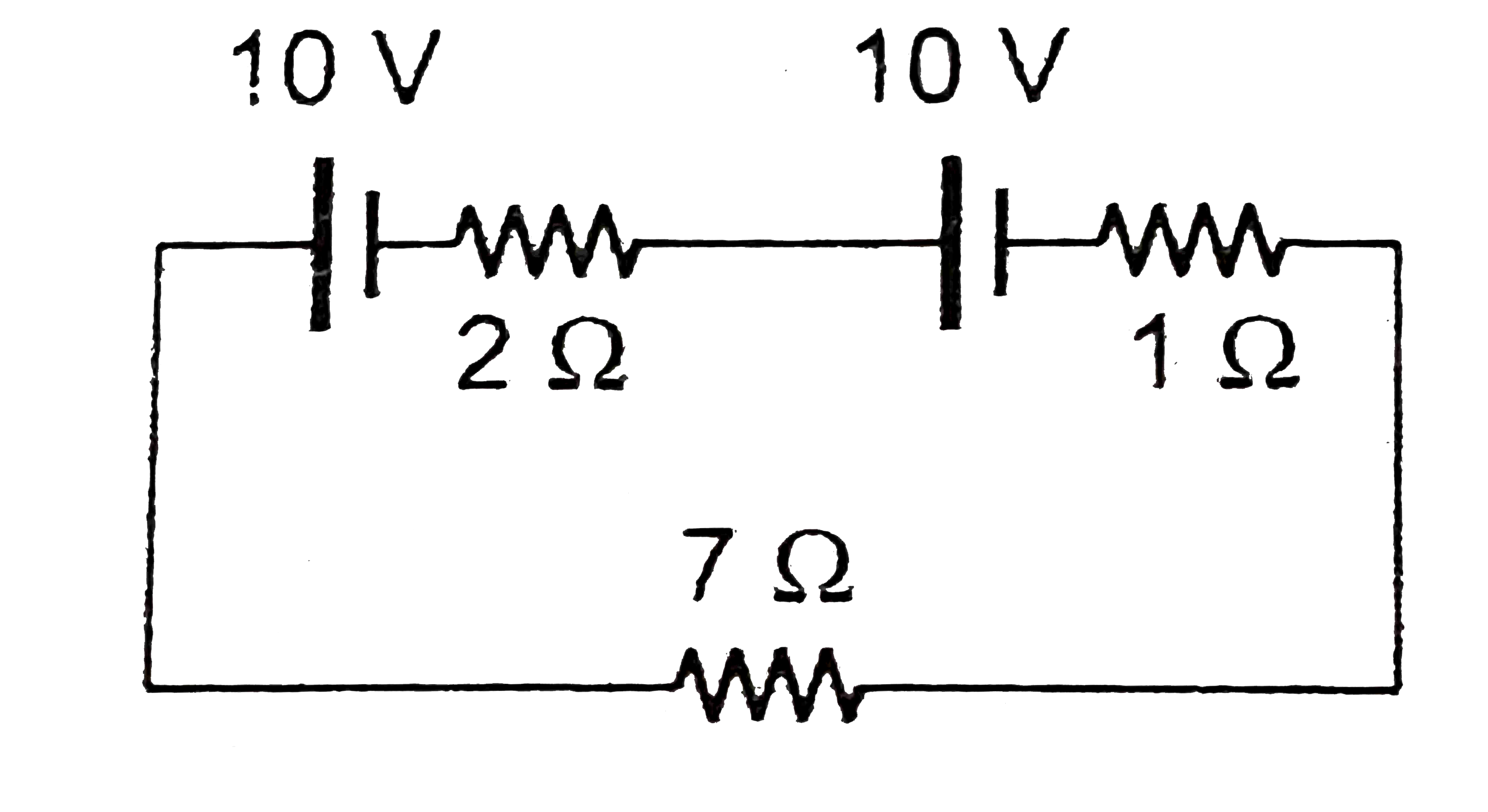
( c) Calculate the potential difference across terminals of each cell.
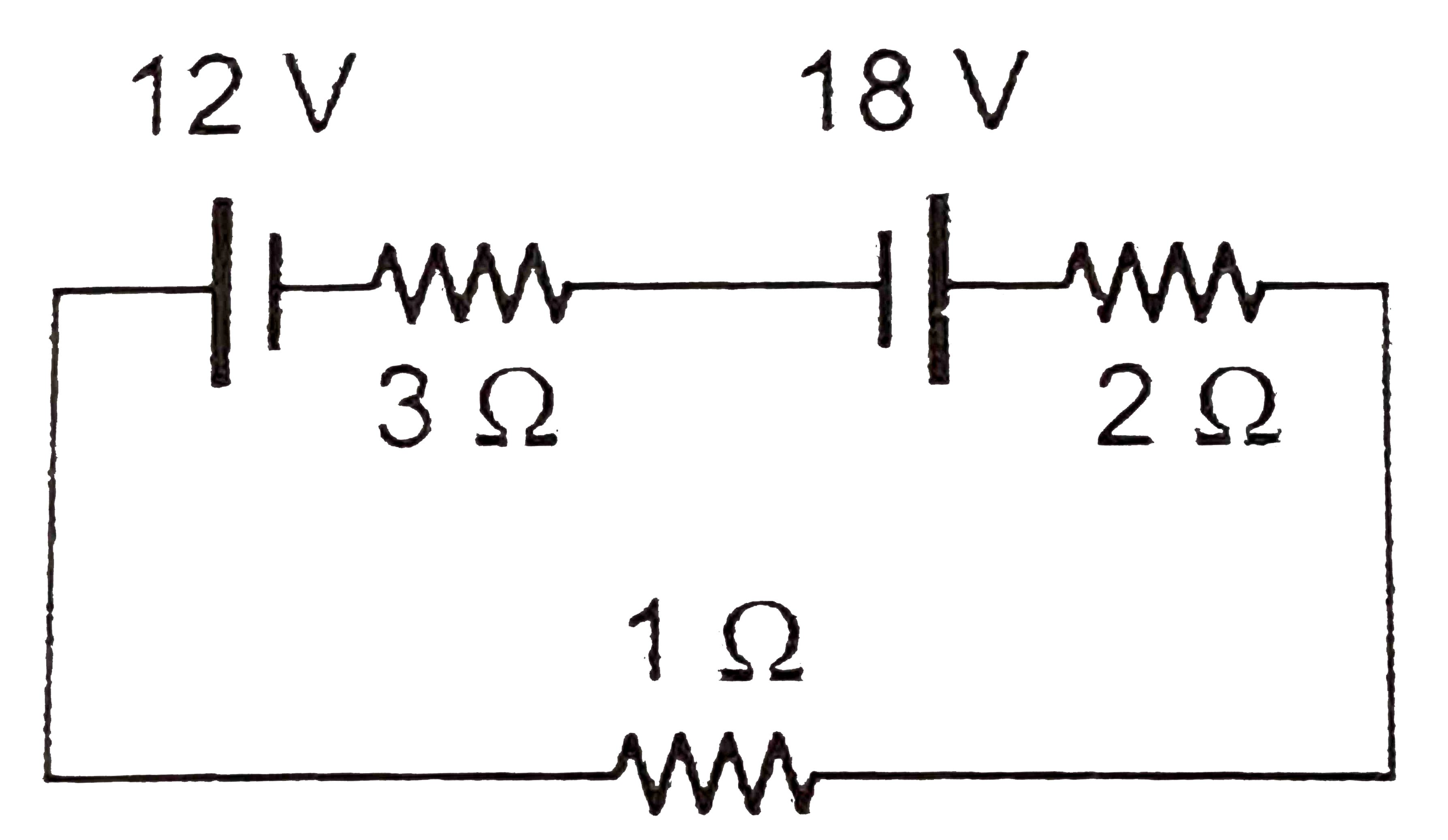
(d) Calculate the potential difference between A and B
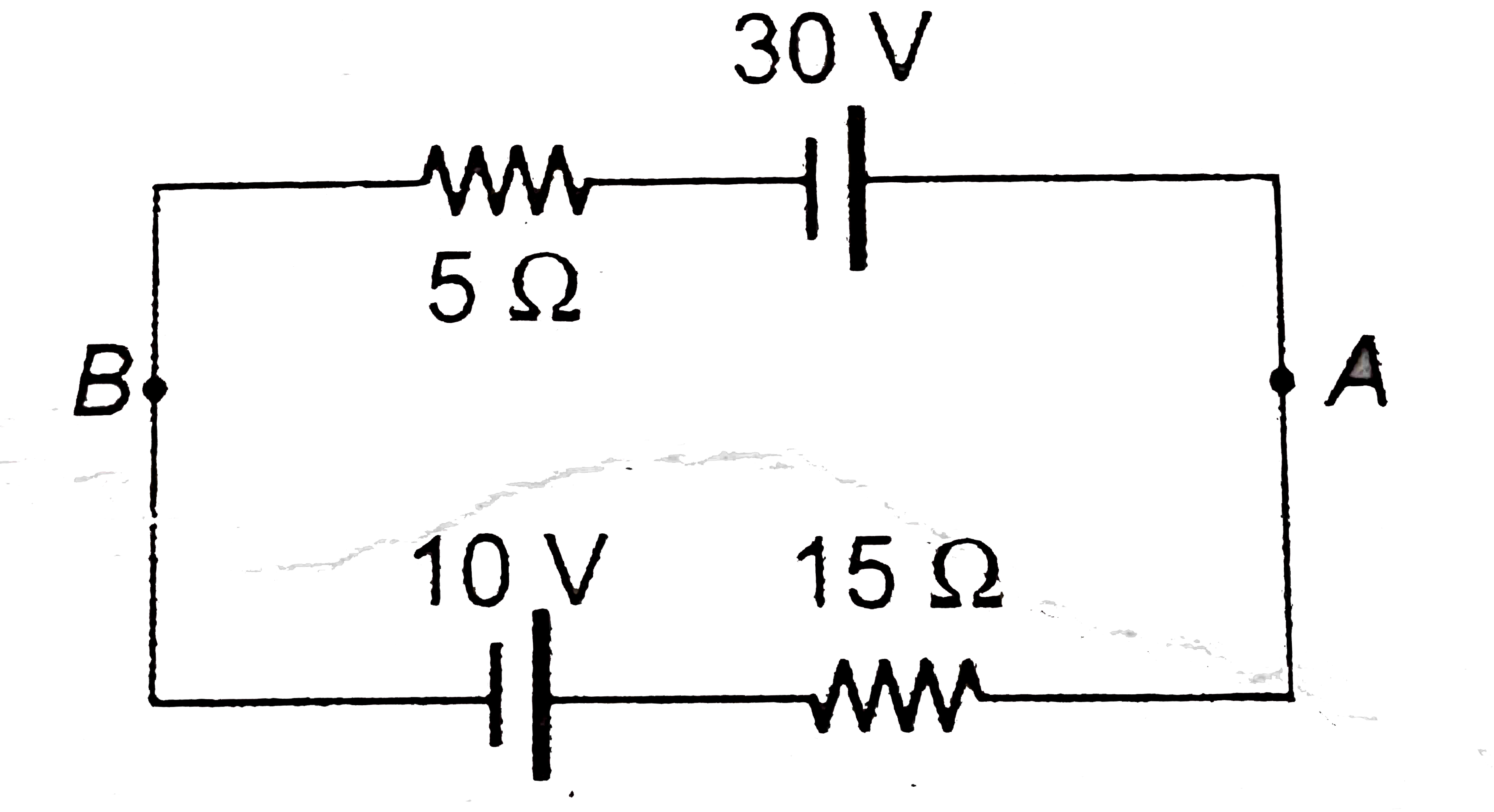
( e) Calculate the current in each resistor and terminal potential difference across each cell.

(f) Calculate potential difference across each cell.
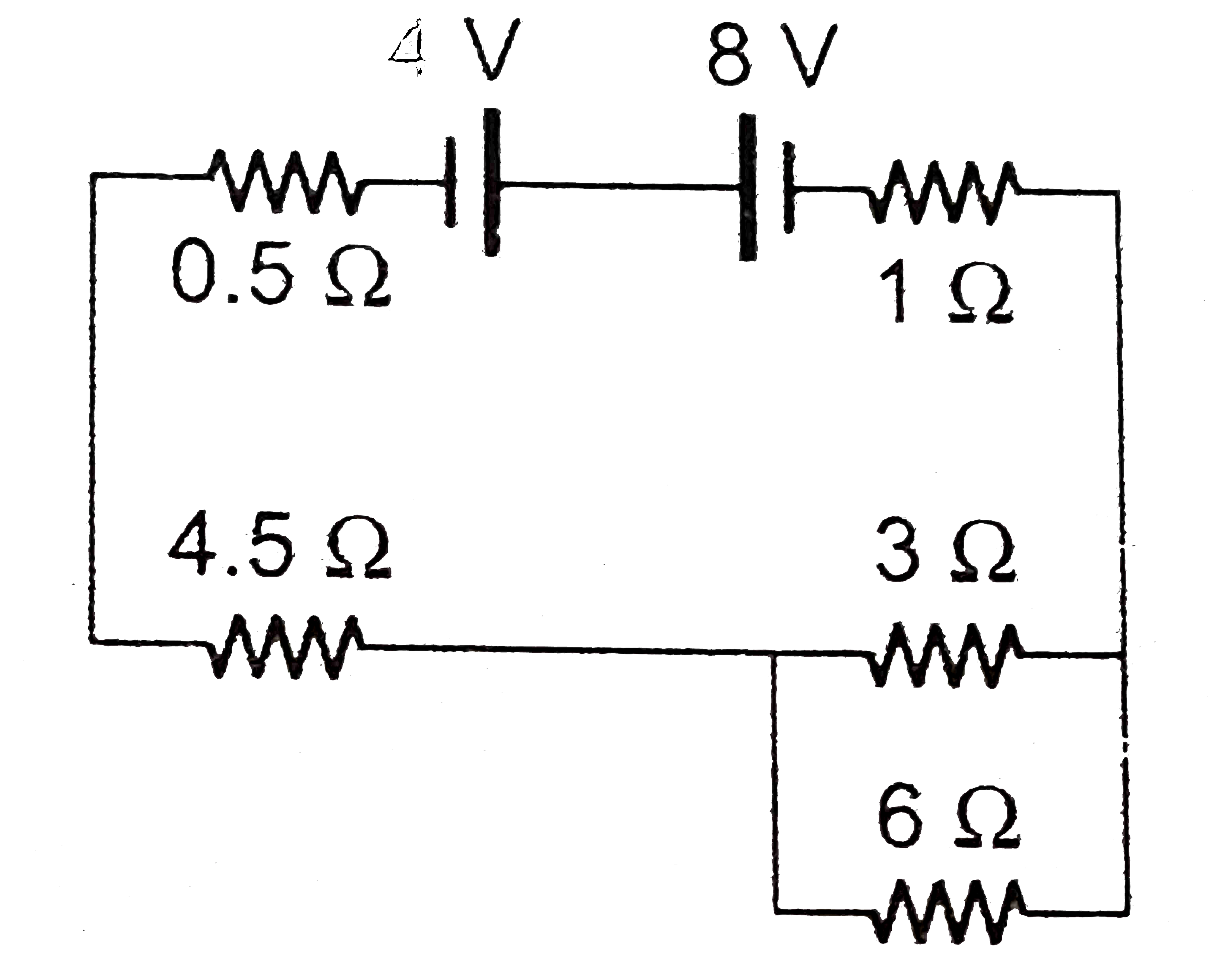
(g) A battery of 6 cells each of emf 2V and internal resistance 0.5Ω is being changed by DC mains of emf 220V by using an external resistance of 10Ω. Calculate.
(i) the charging current
(ii) the potential difference across the battery.
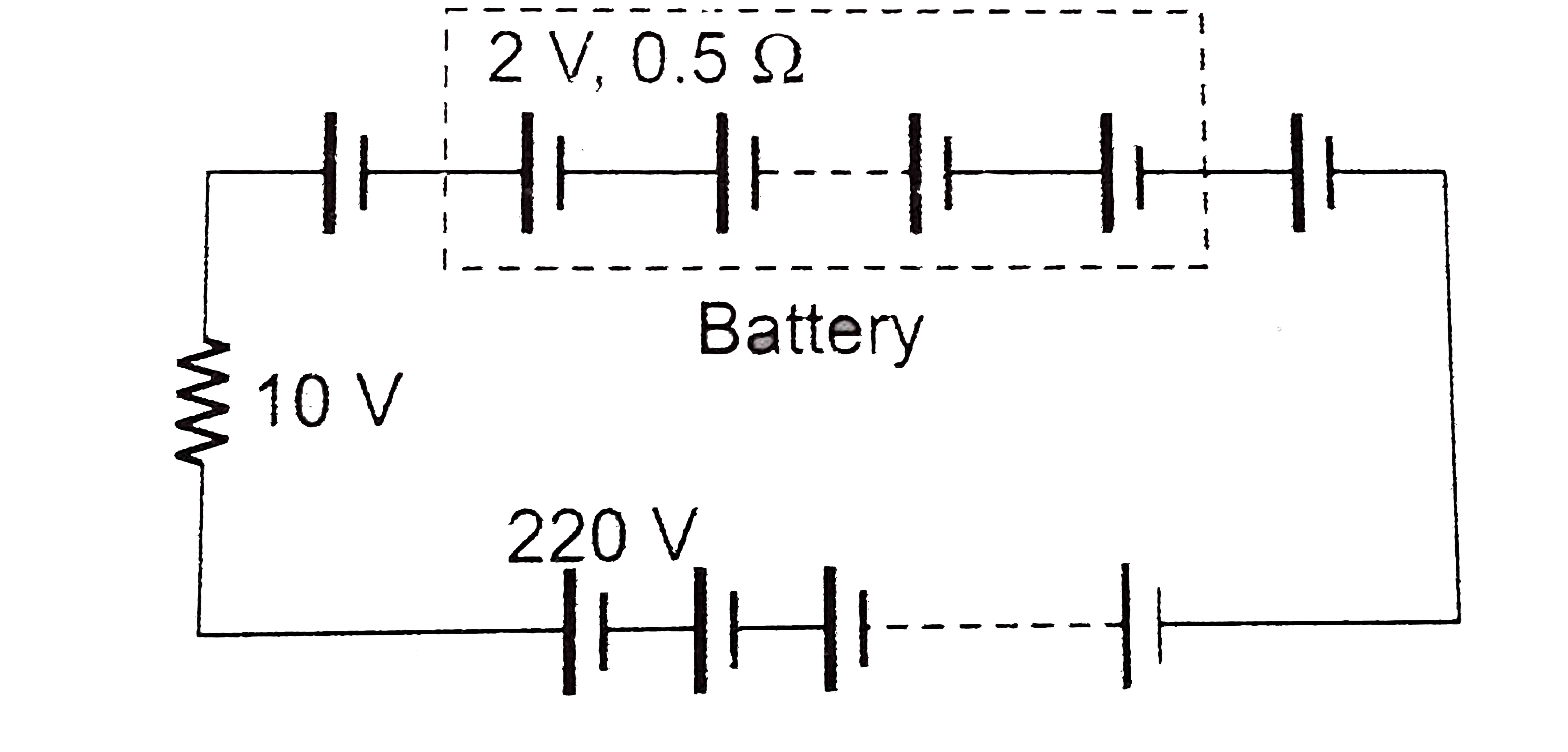 .06:18View Solution
.06:18View SolutionIn the given circuit, the potential difference across the capacitor is 12V. Each resistance is of 3Ω. The cell is ideal. The emf of the cell is
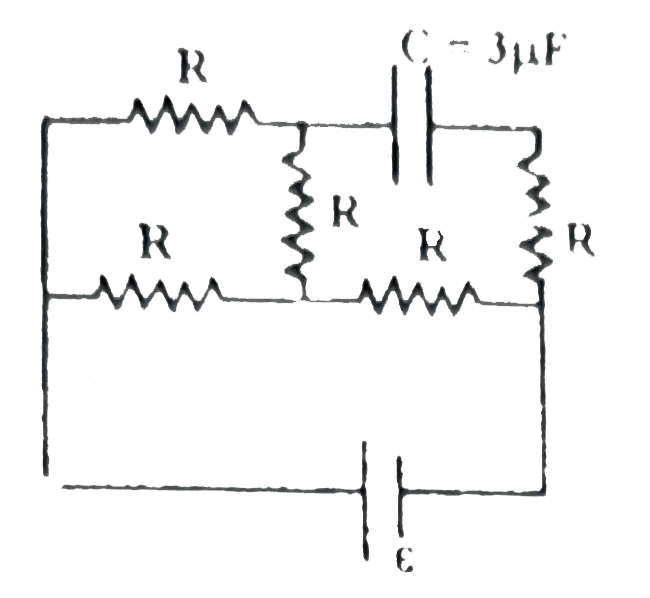 04:27View Solution
04:27View SolutionIf E is the emf of a cell of internal resistance r and external resistance R, then potential difference across R is given as
03:09View SolutionIn the circuit diagram given alongside, find:
(i) total resistance of the circuit,
(ii) total current flowing in the circuit, and
(iii) the potential difference across R1
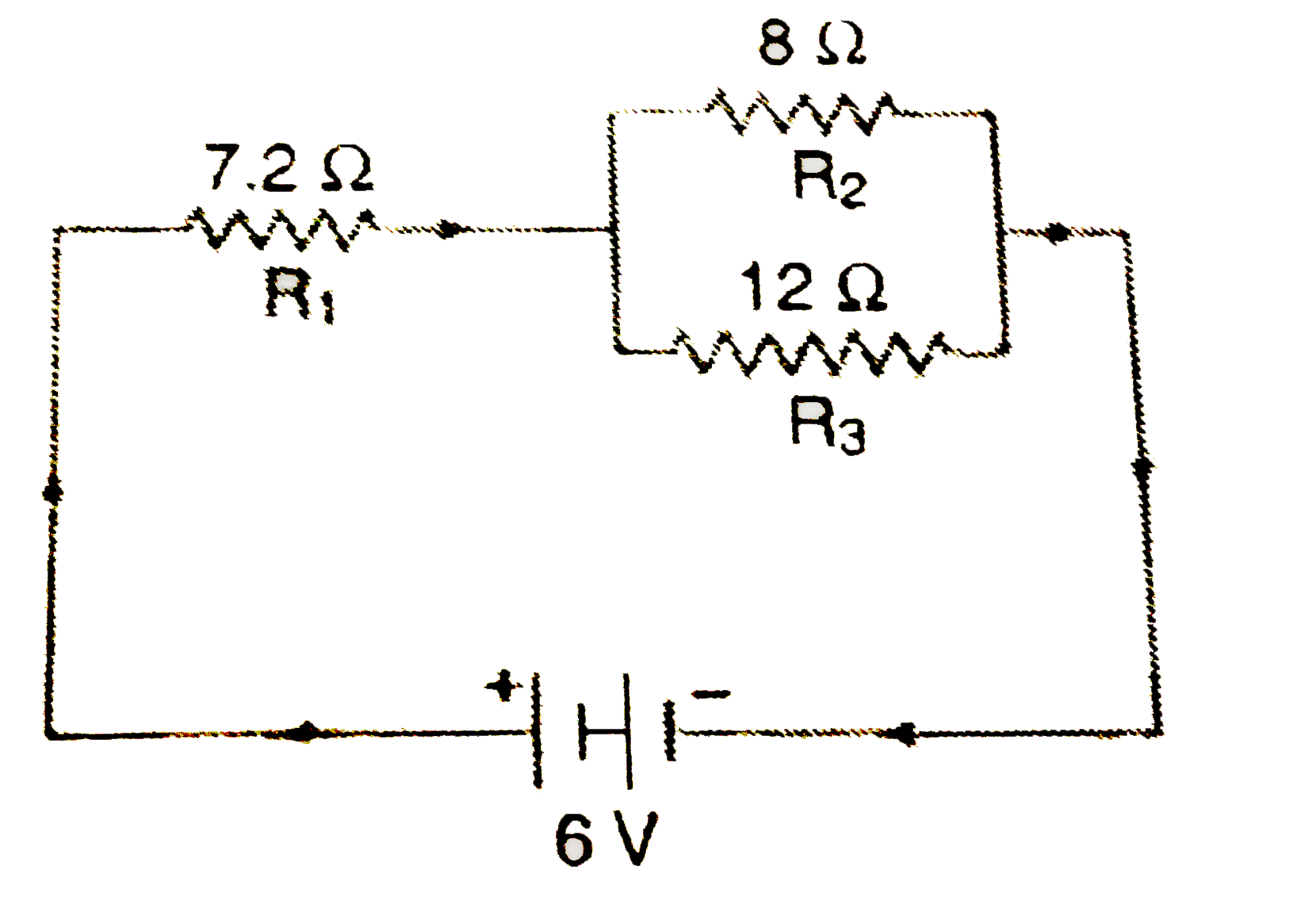 06:52View Solution
06:52View SolutionThree resistance of magnitudes 20Ω,30Ωand40Ω are connected in series.(i) What is the equivalent resistance? (ii) IF the potential difference across the resistance 20Ω is 1V, calculate the potential differences across the other two resistances and also the total potential difference across the combination.
04:00View SolutionA cell of emf 2.1 V and 0.1Ω internal resistance sends 100 mA current in an external circuit. Determine the external resistance,terminal potential difference across that resistance and internal potential drop of the cell.
01:41View SolutionThree identical cells, each of emf 2V and internal resistance 0.2 ohm, are connected in series to an external resistor of 7.4 ohm. Calculate the current in the circuit and the terminal potential difference across an equivalent.
04:55View SolutionFrom the given circuit Find (i) Equivalent emf (ii) Equivalent internal resistance (iii) Total current (I) (iv) Potential difference across each cell (v) Current from each cell
01:19View Solutionln the given circuit, calculate : (i) the total resistance of the circuit (ii) the current through the circuit, and (iii) the potential difference across R_(1) and R_(2)
View Solution

